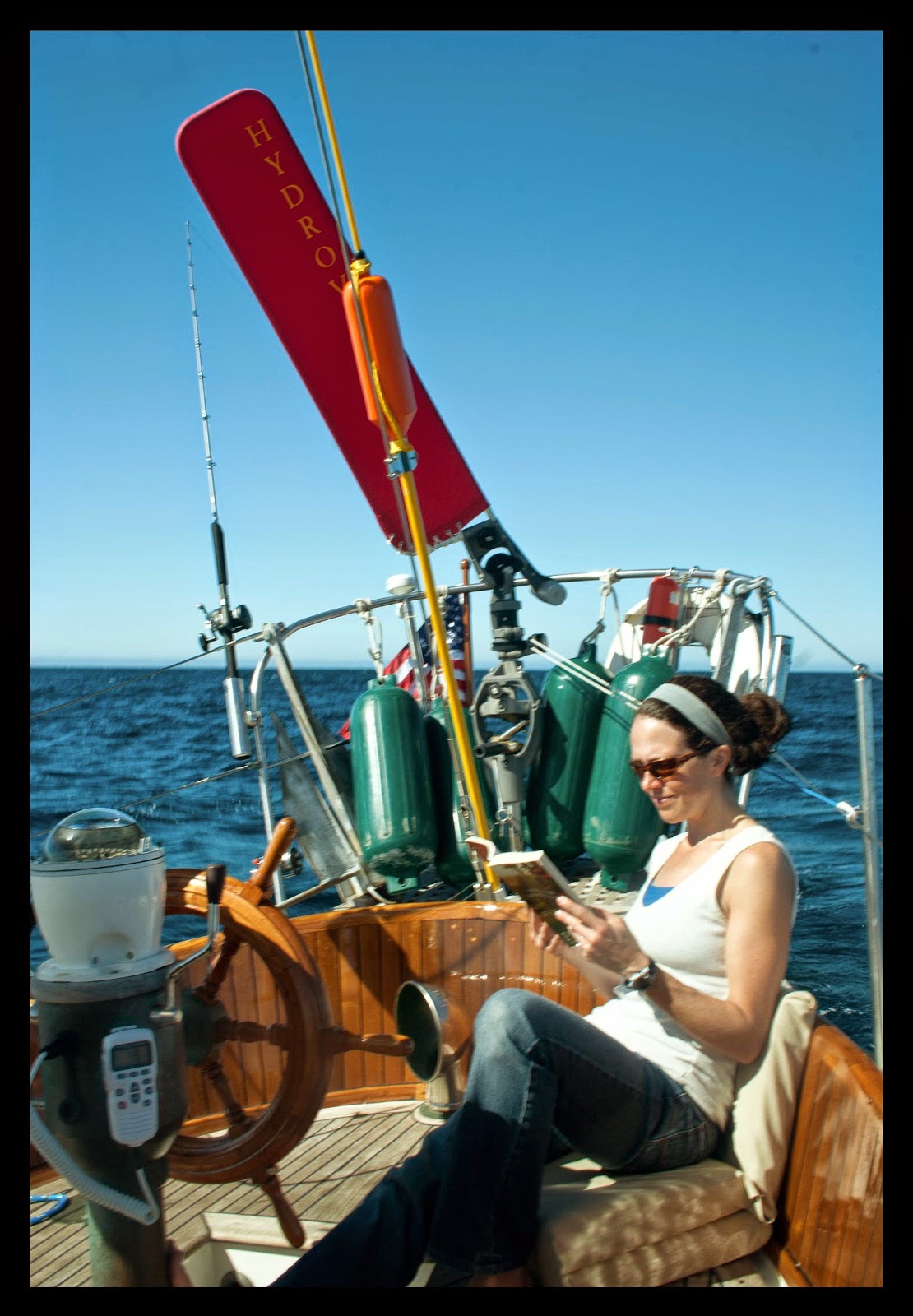We left San Diego at 4 pm on December 12th and sailed through the night, arriving about 60 miles across the border in Ensenada at 8 am the next morning. As we pulled into the harbor, we were surprised to see what appeared to be a Washington state ferry. Upon closer inspection, it was indeed the Nisqually ferry, which operated in the Puget Sound and San Juan Islands. Apparently, it was one of four ferries that were decommissioned in 2009 and sent down to Mexico to be recycled.
After we checked in at the marina, we headed over to the offices of the Port Captain and immigration offices. We were anticipating that they would search the boat, but the check-in process only involved paperwork. The check-in process was a little unusual. There were four different offices within a single building: a bank, office of the port captain, immigration office, and small office that makes copies. We went from place to place filling out forms and getting signatures and stamps as directed. We started at the immigration office, followed by the bank, and then back to immigration and then to the port captain. After that we were sent to make copies then back to the port captain, another stop at immigration, another to the bank, again to the port captain, and then finally we finished at the immigration office. After an hour and a half we had cleared customs and received our 6 month tourist visas. We bought our temporary import permit and fishing licenses in the US so it went faster for us than some of the others in the office.
After we finished, we went out for lunch and walked around town a little bit, and then went to the grocery store to provision for our trip down to Cabo San Lucas. We stayed the night in Ensenada and left the next morning after checking the weather.
The trip from Ensenada to Cabo San Lucas was one of our longest and most enjoyable passages so far. We had light to moderate winds from the northwest and the seas were rarely over 5 feet. This was also the warmest and driest passage we’ve made so far, and most of the evenings we had clear skies and the moon provided almost enough light to read out in the cockpit. The longer passage also provided more time to get accustomed to night watches and being out at sea. On the last day, we finally caught a fish. It was a small mackerel, but it was enough for a couple rounds of fish tacos.
The winds were consistent enough that we used the windvane for a significant amount of time. The windvane is a mechanism that steers the boat on a certain course relative to the wind direction. The way it works is you set the sails and balance the boat on a certain course and lock down the wheel. Then you point the windvane in the direction of the wind. When the boat veers off, the vane turns a rudder and immediately puts her back on the same path, relative to the wind. This means that as long as there aren’t any significant changes in the wind conditions, we can set the windvane and not have to worry about steering the boat. On this passage there were several times we had it going for 15-20 hours at a time. This gave us a lot more time to do whatever we wanted during the day, and the night passages went by much faster since we could just read and stick our head out to look for other boats every ten minutes or so.
We arrived in Cabo San Lucas at 8 am on December 20th. The landscape of the bay is quite striking, with the long stretch of beach on one side and the monoliths and rocky coastline on the other. It was a bit of a shock to pull into the harbor at Cabo after being out at sea for six days. The place is a bustling tourist town with people and boats everywhere. We pulled up to the fuel dock to get some diesel, and then checked in at the marina. As we had been warned, guest moorage in Cabo was indeed expensive. We paid four times as much as we did in San Francisco, but it was nice to stretch our legs and have a full night of uninterrupted sleep. We spent the rest of the day walking around town and then left late the next morning.
We arrived in Cabo San Lucas at 8 am on December 20th. The landscape of the bay is quite striking, with the long stretch of beach on one side and the monoliths and rocky coastline on the other. It was a bit of a shock to pull into the harbor at Cabo after being out at sea for six days. The place is a bustling tourist town with people and boats everywhere. We pulled up to the fuel dock to get some diesel, and then checked in at the marina. As we had been warned, guest moorage in Cabo was indeed expensive. We paid four times as much as we did in San Francisco, but it was nice to stretch our legs and have a full night of uninterrupted sleep. We spent the rest of the day walking around town and then left late the next morning.


